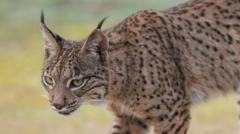The Iberian lynx, a stunning feline known for its distinctive leopard-like spots, is reclaiming its place in the wild! Just two decades ago, this amazing species was nearly extinct, with fewer than 100 individuals left across Spain and Portugal. Thanks to a collaborative conservation program, their numbers have soared to over 2,000 today!
Rodrigo Serra, who leads the effort, shares, "The Iberian lynx was dangerously close to disappearing." Factors such as habitat loss, vehicle accidents, and a devastating decline in wild rabbit populations – their primary prey – played a huge role in their near extinction.
The revival began around 2005, when Spain saw the first successful lynx birth in captivity. Portugal followed suit, establishing a National Breeding Centre in Silves, where lynxes now undergo extensive training to thrive in natural habitats while keeping a respectful distance from humans.
With every birth and release, conservationists like Pedro Sarmento closely monitor the lynxes, ensuring genetic diversity and adapting to their new homes. However, with more lynxes on the loose, managing their interaction with livestock has become a challenge, leading to some community concerns.
Lítio, one of the early released lynx, captured hearts by journeying back to Spain but settling down after finding a mate. His story exemplifies the resilience and adaptability of the Iberian lynx.
As we strive to increase their population to 5,000-6,000 by 2035, conservationists remain cautiously optimistic, taking it one paw at a time in the fight to secure a safe and thriving future for the Iberian lynx!
Rodrigo Serra, who leads the effort, shares, "The Iberian lynx was dangerously close to disappearing." Factors such as habitat loss, vehicle accidents, and a devastating decline in wild rabbit populations – their primary prey – played a huge role in their near extinction.
The revival began around 2005, when Spain saw the first successful lynx birth in captivity. Portugal followed suit, establishing a National Breeding Centre in Silves, where lynxes now undergo extensive training to thrive in natural habitats while keeping a respectful distance from humans.
With every birth and release, conservationists like Pedro Sarmento closely monitor the lynxes, ensuring genetic diversity and adapting to their new homes. However, with more lynxes on the loose, managing their interaction with livestock has become a challenge, leading to some community concerns.
Lítio, one of the early released lynx, captured hearts by journeying back to Spain but settling down after finding a mate. His story exemplifies the resilience and adaptability of the Iberian lynx.
As we strive to increase their population to 5,000-6,000 by 2035, conservationists remain cautiously optimistic, taking it one paw at a time in the fight to secure a safe and thriving future for the Iberian lynx!






















